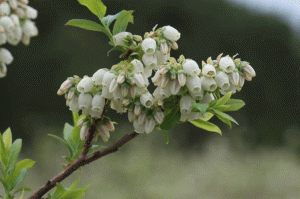Sweet Corn
By this time last year, we had already begun catching European corn borer (ECB) adults, as well as a few corn earworm (CEW) adults. Due to much cooler conditions this season, blacklight trap catches have very few insects of any type. As a result, there will be no maps published in this IPM Update. In general, sweet corn is well behind recent seasons in terms of development. As ECB numbers develop, their activity will be reported here.
Cole Crops
In many locations, imported cabbageworm butterflies (ICW) are active. These butterflies were seen laying eggs on kale in Hunterdon County this week. Egg deposition is undoubtedly occurring all over the state, during warm periods. Be sure to check the youngest portions of plants, as this is often where the ICW larvae go to feed. Feeding can damage the growing point of plants, if it is not detected in time. Check 5 consecutive plants each in 10 random locations throughout the field. Consider treating if caterpillars are found on 10% or more plants that are in the 0-9 true leaf stage. From 9-leaf to the early head stage (in broccoli, cauliflower and cabbage) infestations up to 20% may be tolerated. Once heads begin to form, a 5% threshold should be observed to protect the marketable portion of the plant. For leafy greens such as collards and kale, 10% plants infested is the threshold throughout.
Crucifer flea beetle is active on many plantings, particularly when conditions are warm. When scouting cole crops for caterpillar pests, check for the presence of flea beetles. Consider treating if flea beetles are present on 50% or more plants, and feeding injury is evident on the plants. Be sure to monitor newly emerged or transplanted fields for the presence of this pest. In general, plants like arugula and mustard (those with a “hotter” flavor) are more favorable to flea beetles.


